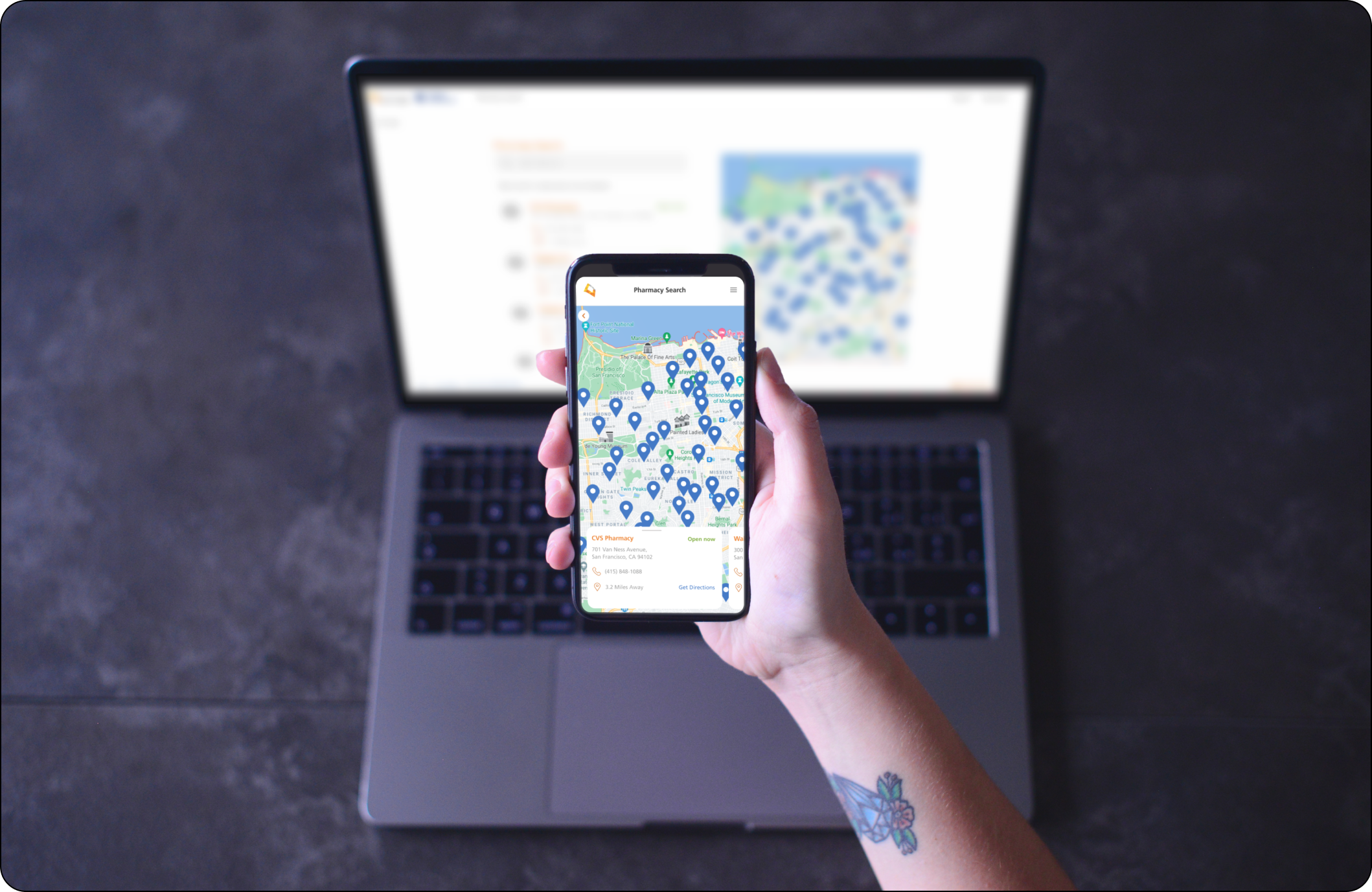
Optum Virtual Care
Background
Optum Virtual Care (OVC) was a responsive telehealth site and mobile application, developed during the COVID-19 pandemic.
OVC was eventually subsumed by another internal telehealth application that was being built at the same time, but many of the components that I designed are now being used by that app.
My Role
I worked on the project for a few months, taking over from the previous designer to add some of the final features. My role on this project was more design-focused than research-based, as the initial research had already been conducted prior to my joining.
As the project progressed, I began working with an external design team who were working on the telehealth app that eventually combined with my one. Eventually, I stopped producing features for the old app and started to produce features for the new one. I also became a liaison between that team and our product teams, as well as working on producing UX copy for the UI.
Feature #1: Pharmacy Selection
Problem to be solved
Patients who have had a virtual appointment with a doctor want to have the option to have their prescription sent to a participating pharmacy of their choice. While this was during the COVID-19 pandemic when the majority of people were not free to travel due to restrictions, there are other reasons why this would be of benefit:
Mobility issues or chronic conditions that make it difficult to travel to a doctor’s office
No access to a printer
Approach and Solution
In the US, many healthcare companies provide a home delivery service. Many members avail of these services, but given that people were often not living in their usual residence during the pandemic, an option to collect a prescription from a chosen local pharmacy would likely be a huge relief.
Given that a person’s chosen pharmacy might change over time, I added multiple methods for the user to choose their pharmacy.
As part of the booking process for a telehealth appointment, I added an option for the user to select in-person pickup or home delivery, in the event that a prescription was necessary. I added a map component to allow both searching by name and geographical searches, making it easier to identify pharmacies in the user’s location.
Considering that prescriptions might be rolling (i.e. not linked to an appointment), I added a pharmacy update section to the user profile. Here, the user was given an option to switch to home delivery later as their chosen method, or to change their selected pick-up pharmacy. These preferences could be updated at any time.

Pharmacy search prototype - desktop
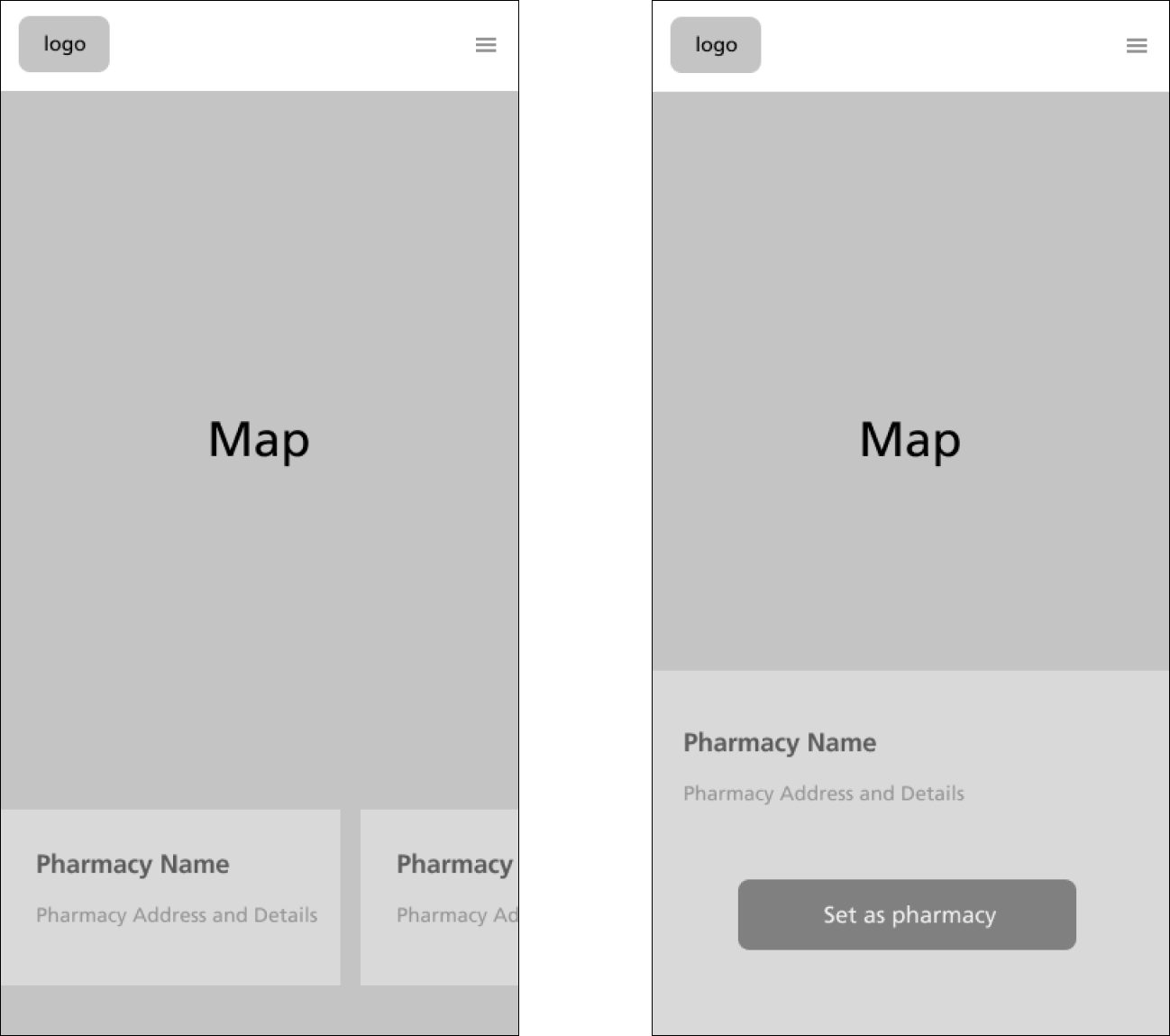
Pharmacy search prototype - mobile version

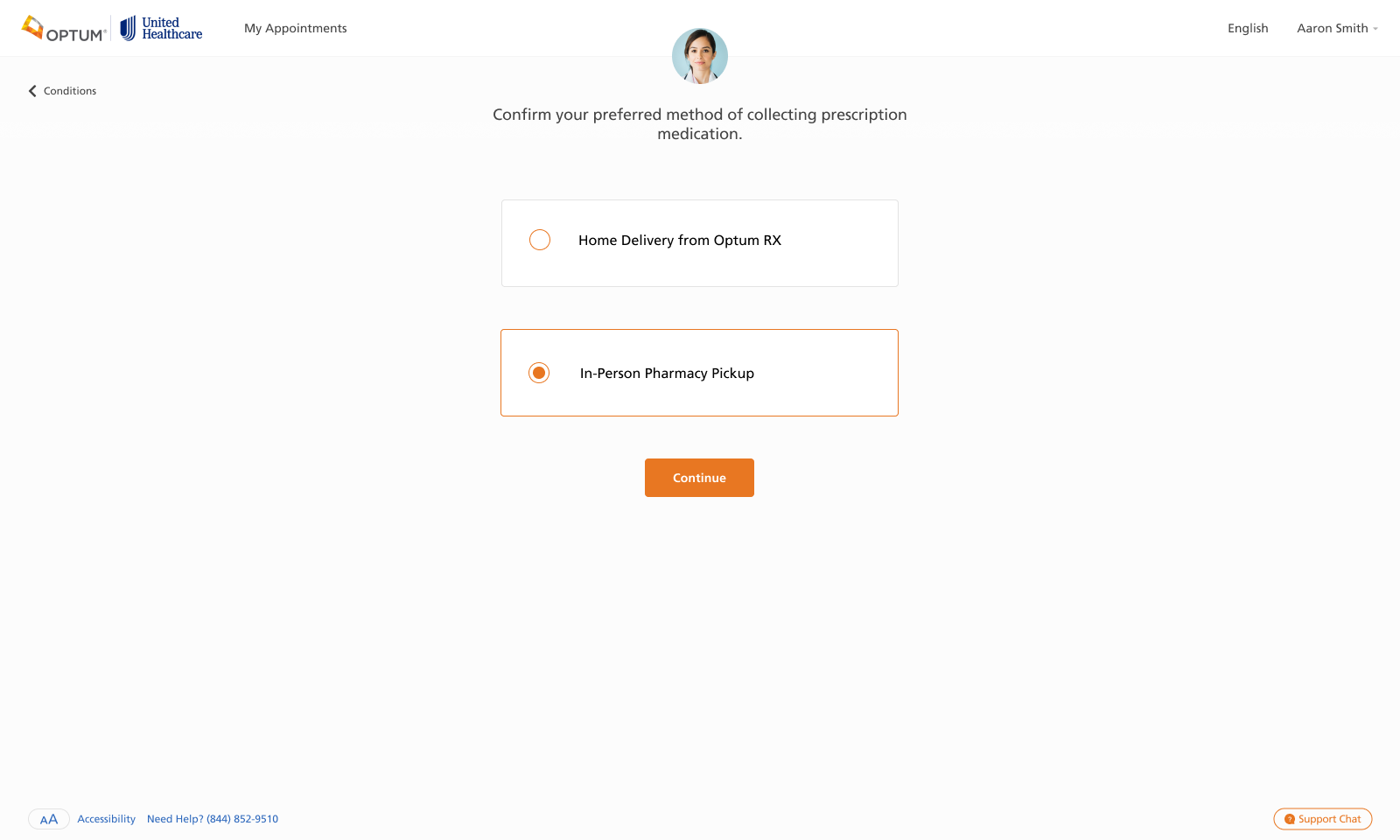
Choose pharmacy or home delivery - final version
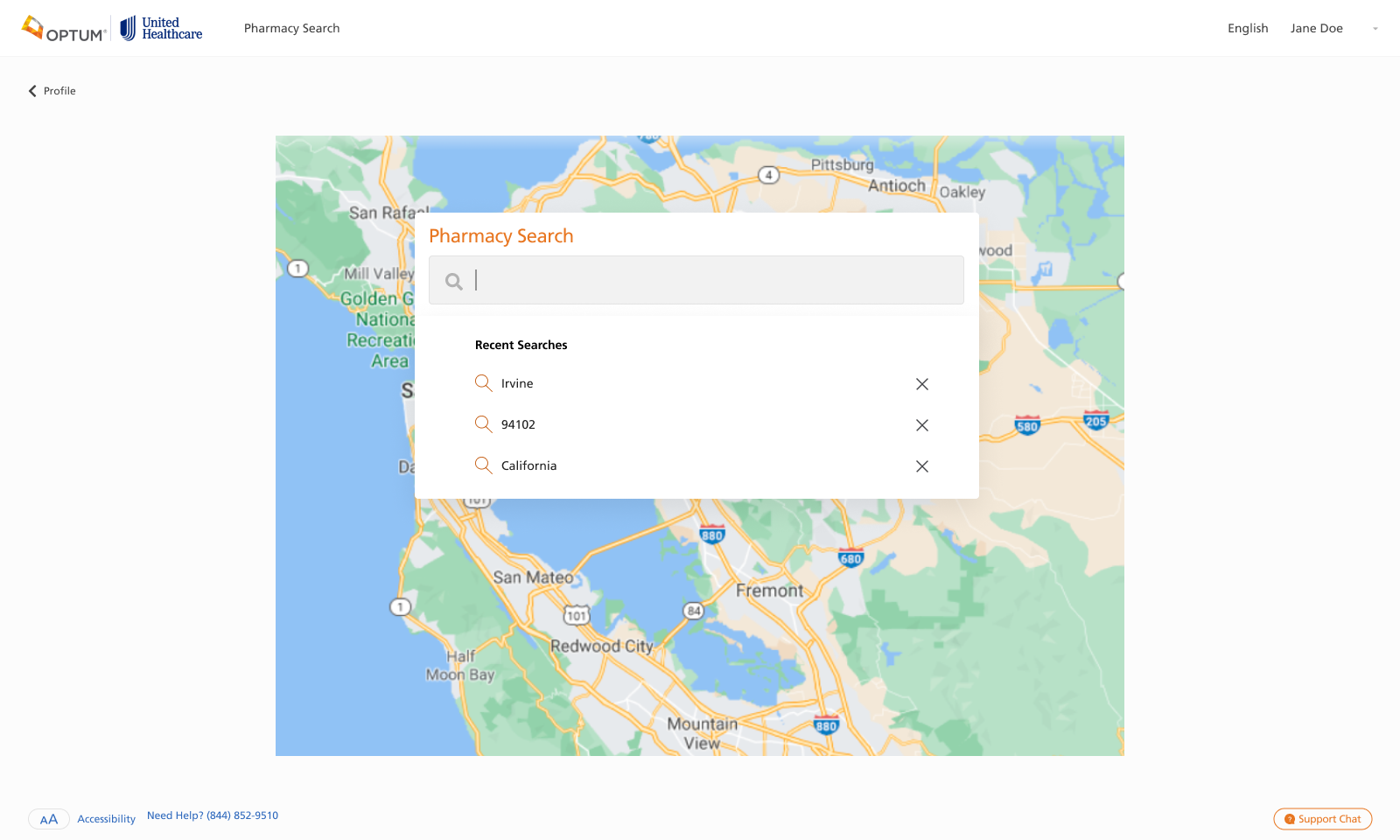
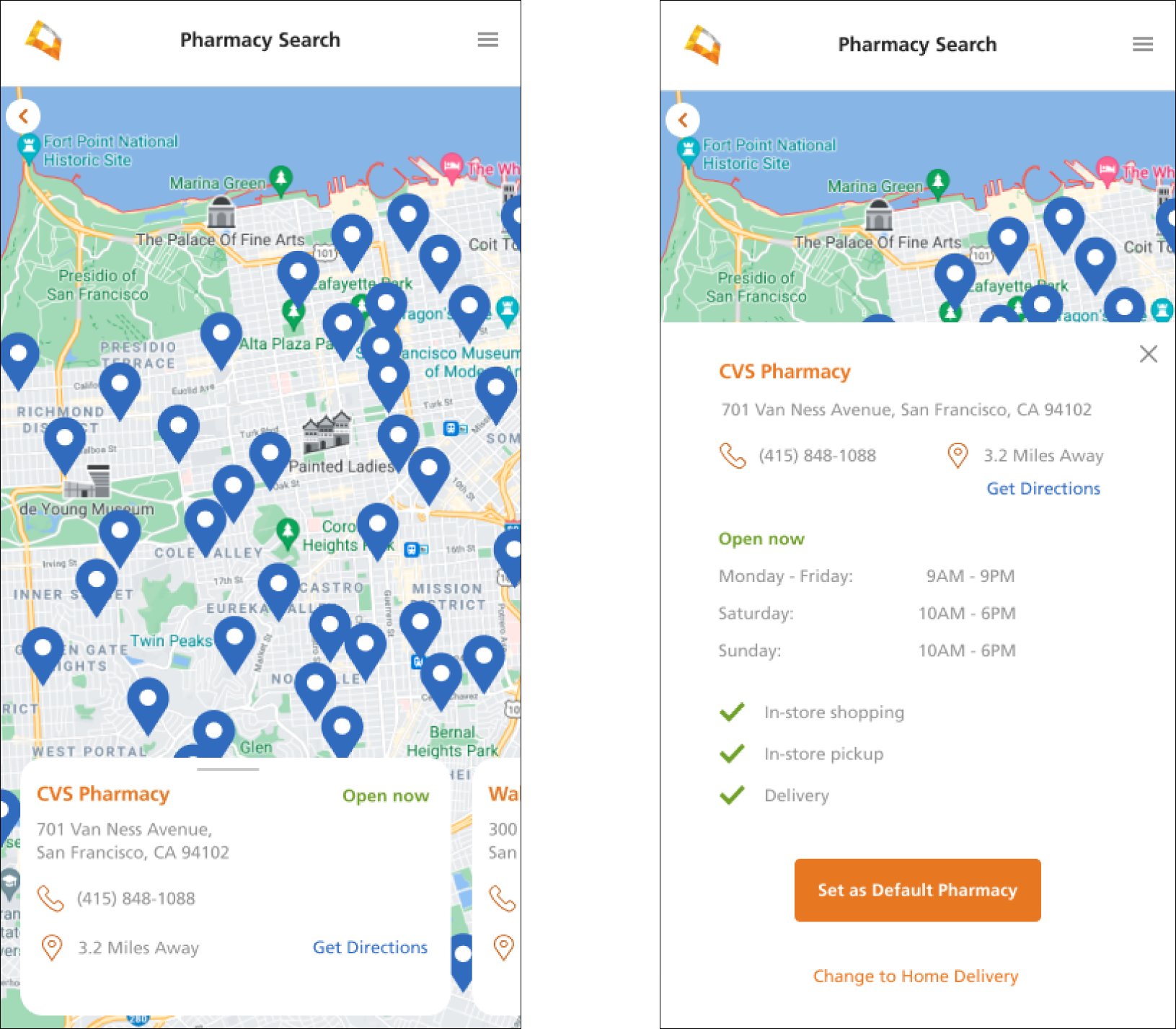
Hi-fidelity search prototype - mobile version

Update pharmacy choices in 'Settings'
Feature #2: Payments
Problem to be solved
Patient are required to make their copay payment online ahead of their appointment, which is often a stressful part of the process, particularly when someone is ill.
They may also need to keep copies of their receipts for tax purposes or financial aid.
Approach and Solution
Given that doctor’s appointments can be stressful and upsetting, I wanted to make the payment process as straightforward and painless as possible.
Part of the ask was to give the user the option of choosing between different stored payment methods. Similar to the pharmacy preferences, I added this in two separate flows:
At the last step of the appointment booking process, the user can choose from a stored payment option, or choose to add a new one. I included system updates to inform the user that the payment was a) in process, and b) completed.
In the user’s profile, they can update their payment options at any time. I also added the option to delete any stored payment method. I also included an option to either view an individual receipt at any point, or to print them all in bulk. This removes the effort of having to print/save each one individually.



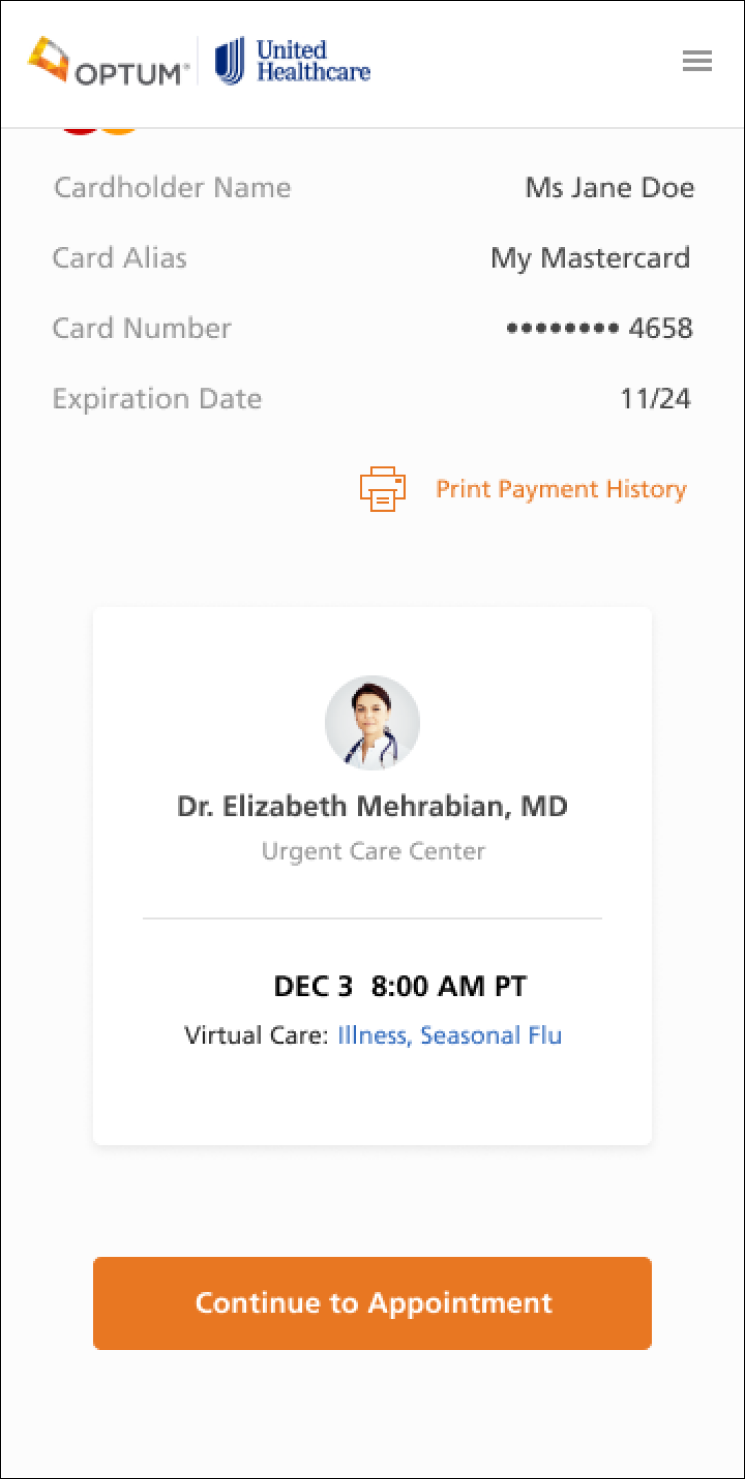
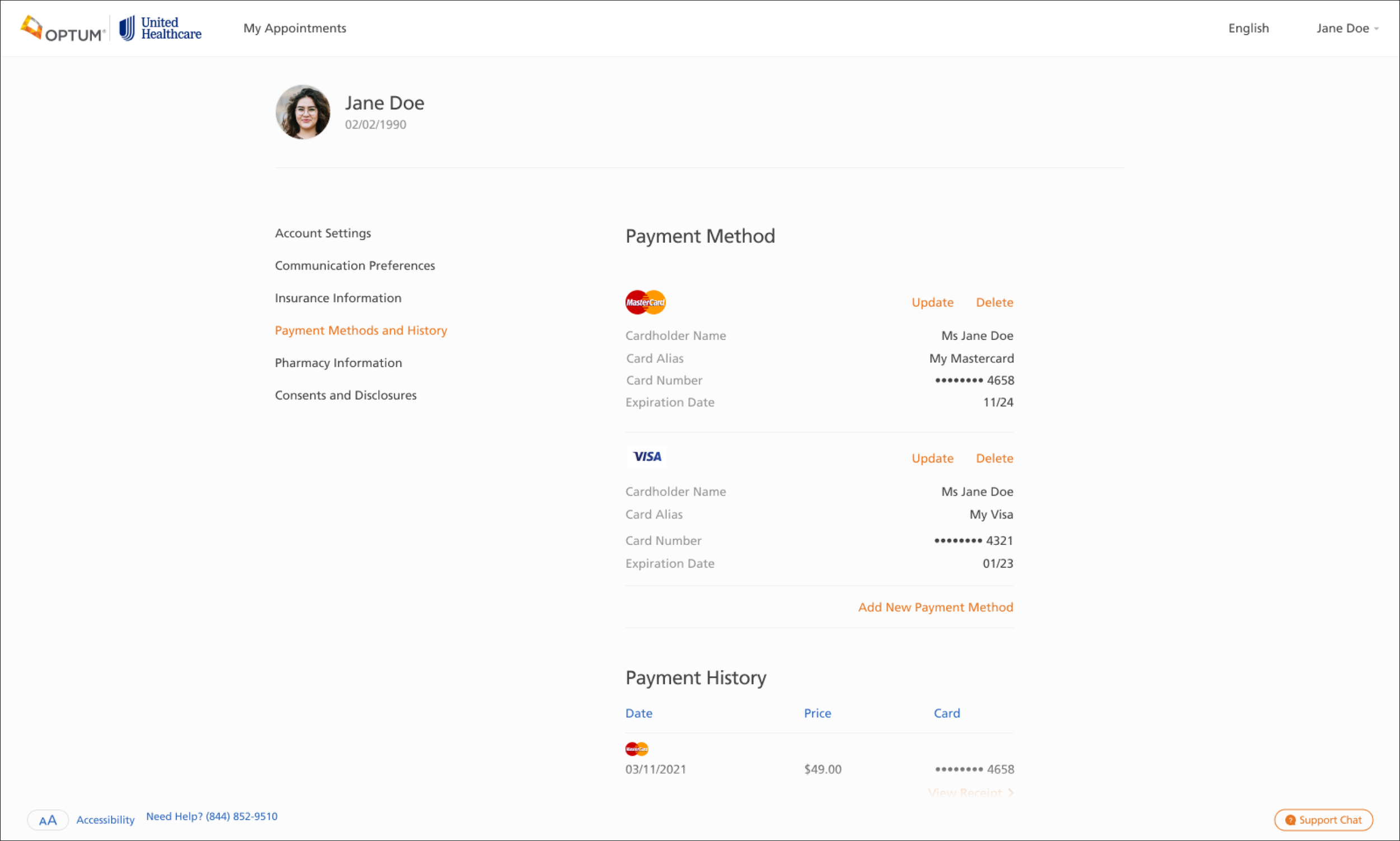
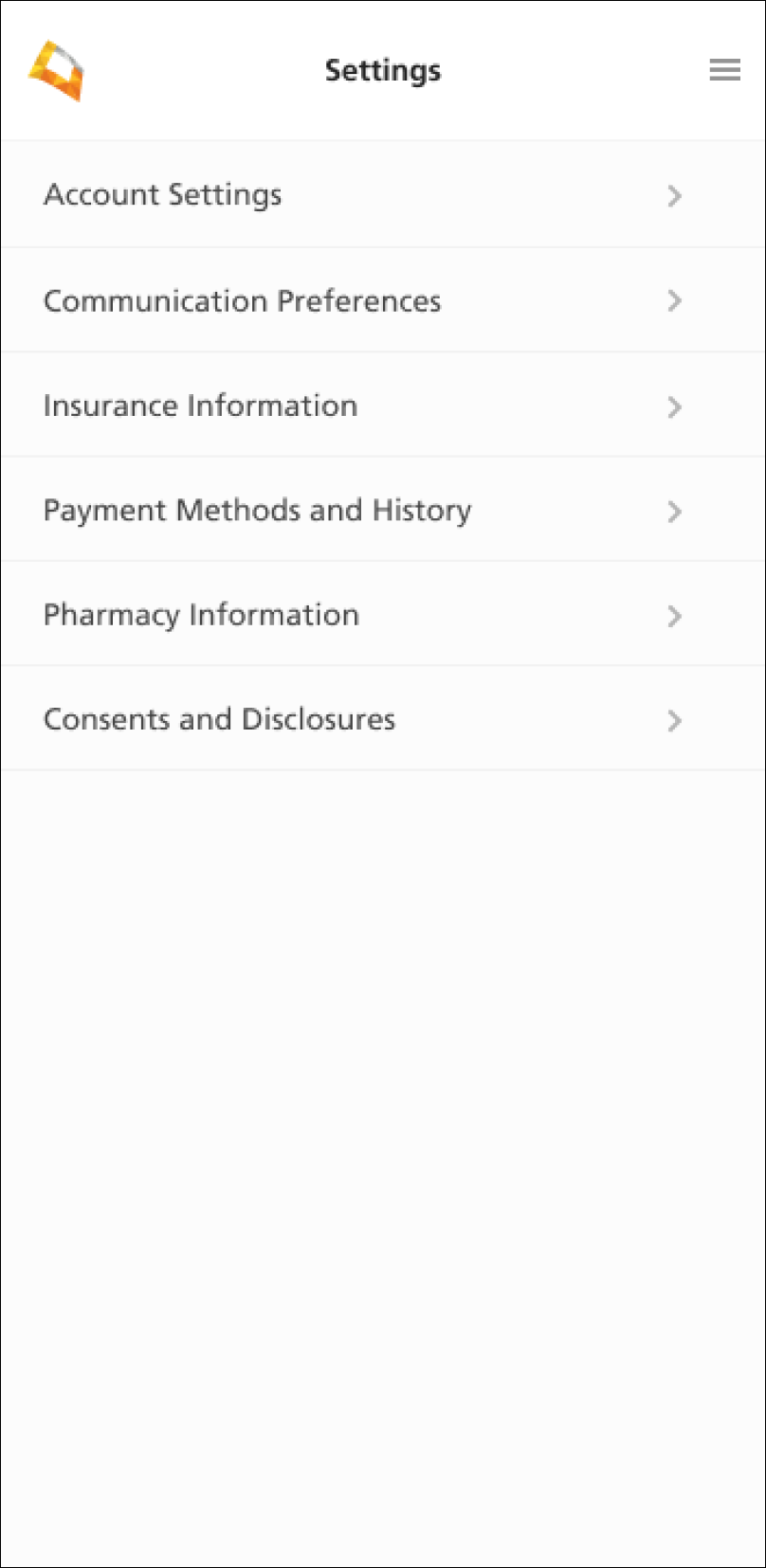
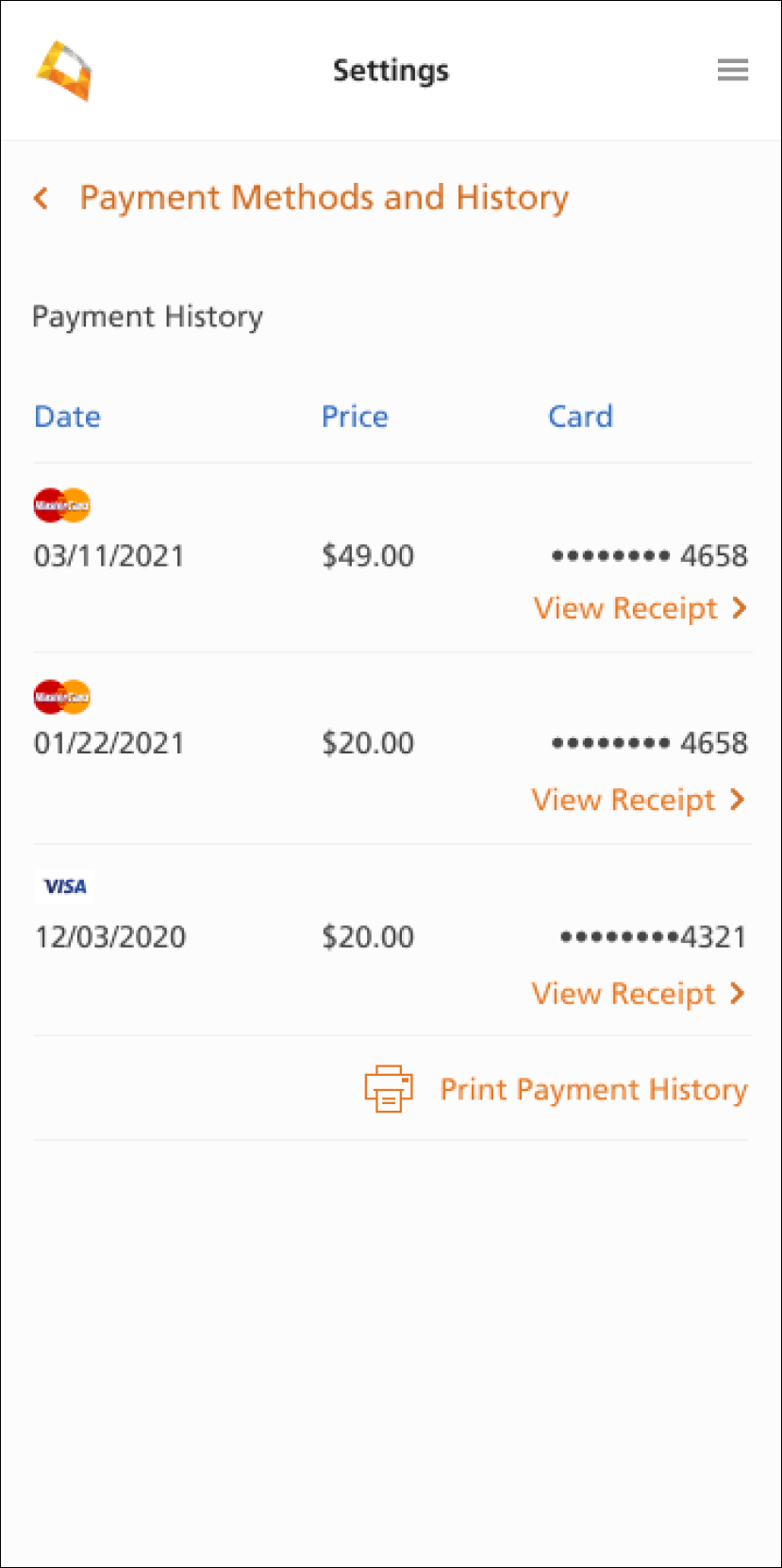
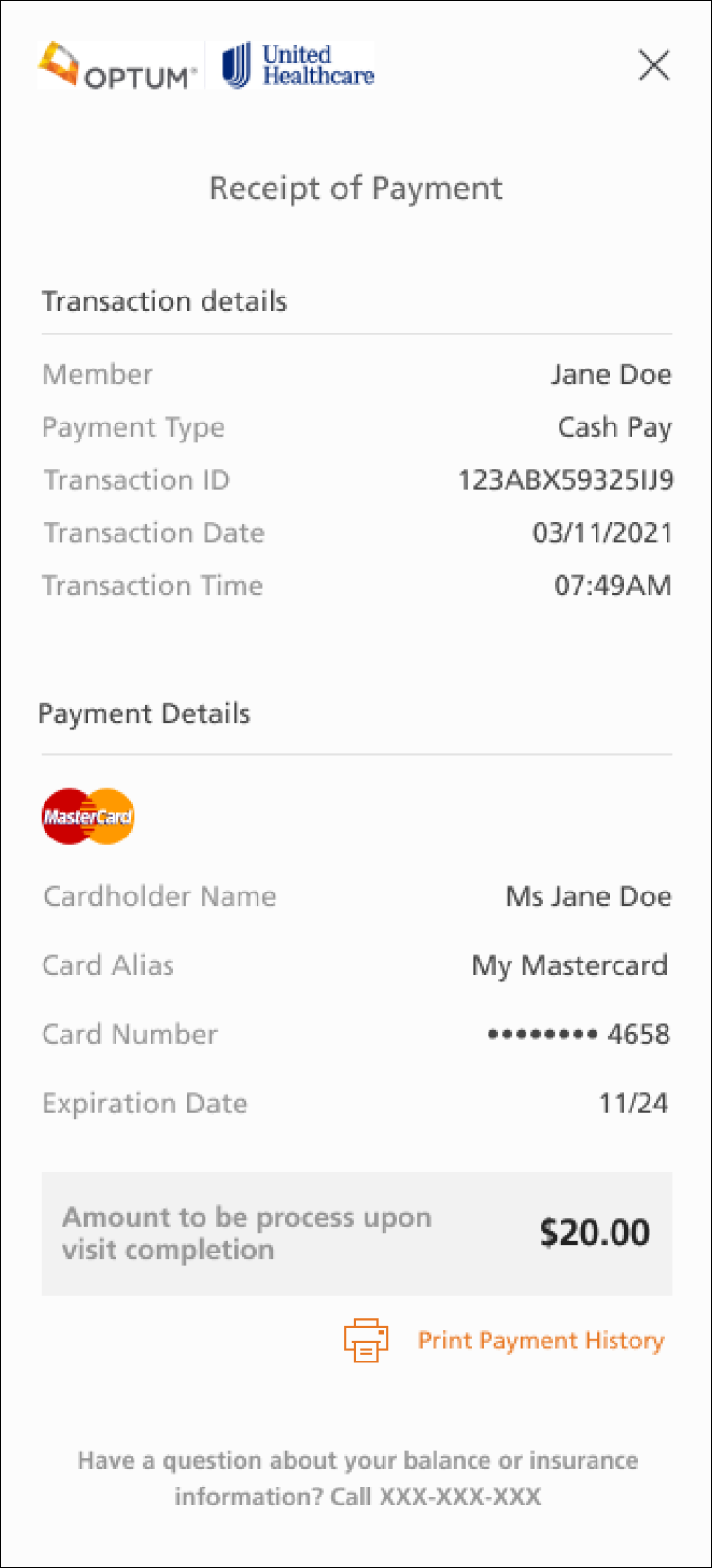
Key Takeaways and Learnings
As of now, this is the only project where I did not have direct access to users - a customer research team conducted that analysis. Because of this, I was not able to gather user feedback on design iterations, but other stakeholders were very involved in this process.
Did a lot of ….